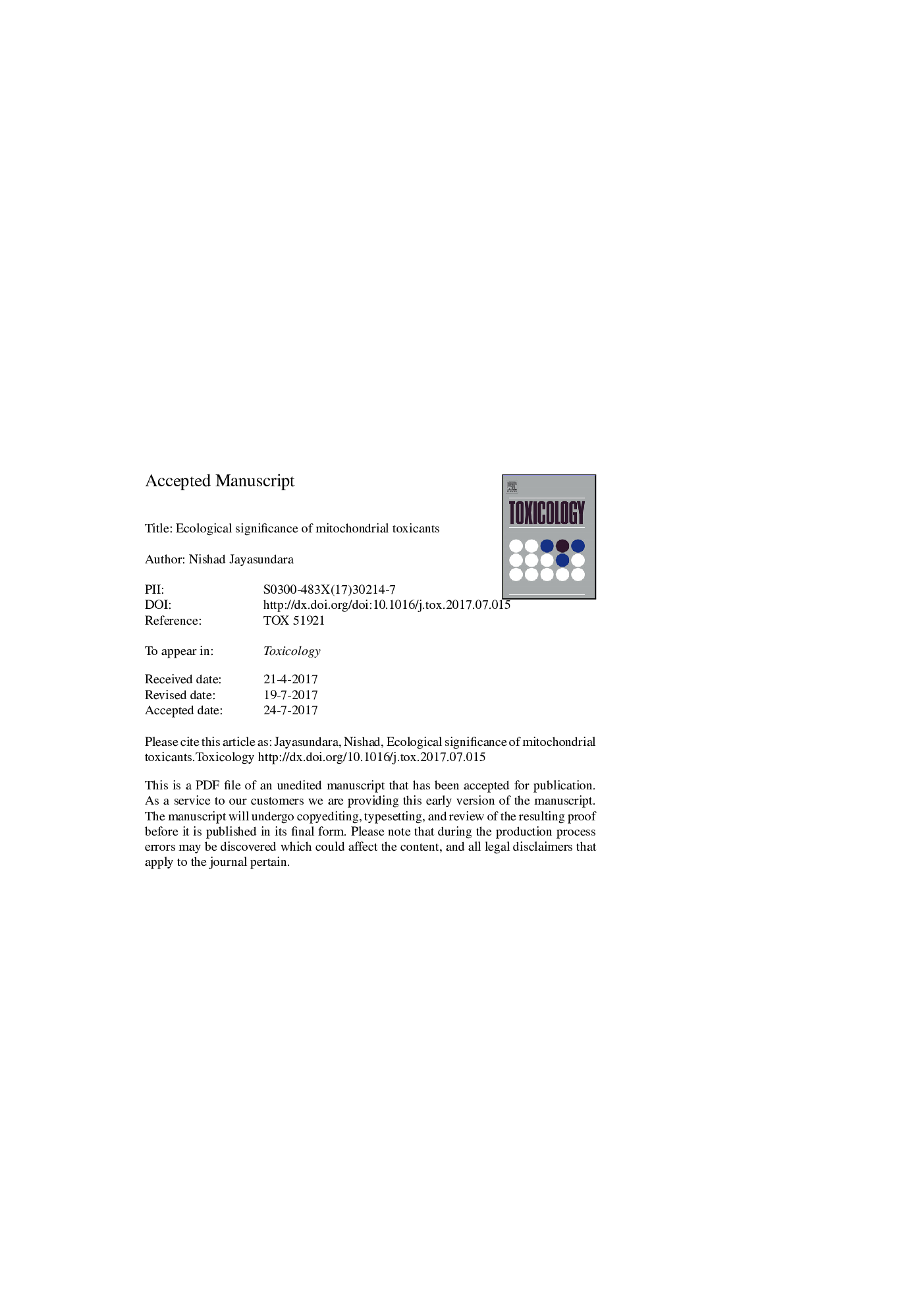| کد مقاله | کد نشریه | سال انتشار | مقاله انگلیسی | نسخه تمام متن |
|---|---|---|---|---|
| 8553037 | 1562281 | 2017 | 49 صفحه PDF | دانلود رایگان |
عنوان انگلیسی مقاله ISI
Ecological significance of mitochondrial toxicants
ترجمه فارسی عنوان
اهمیت اکولوژیکی سمیات میتوکندری
دانلود مقاله + سفارش ترجمه
دانلود مقاله ISI انگلیسی
رایگان برای ایرانیان
کلمات کلیدی
PAHPCBTCDDOXPHOSNOS2,3,7,8-Tetrachlorodibenzo-p-dioxin - 2،3،7،8-تترا کلریدیبنزوپتوفان دیوکسینMitochondrial DNA - DNA میتوکندریاROS - ROSPollutants - آلایندهPersistent organic pollutant - آلاینده های پایدار آلیPolychlorinated biphenyls - بیفنیل پلیکلر Climate change - تغییرات آب و هواmtDNA - دیانای میتوکندریاییEcotoxicology - سم شناسی زیست شناسیOxidative phosphorylation - فسفوریلاسیون اکسیداتیوMitochondria - میتوکندریاPolycyclic aromatic hydrocarbons - هیدروکربن آروماتیک چندحلقهایStress responses - پاسخهای استرسpop - پاپReactive oxygen species - گونههای فعال اکسیژن
موضوعات مرتبط
علوم زیستی و بیوفناوری
علوم محیط زیست
بهداشت، سم شناسی و جهش زایی
چکیده انگلیسی
Mitochondrial dysfunction with exposure to anthropogenic contaminants is a critical concern in biomedical and ecological health. Importantly, understanding the role of mitotoxicants in modulating organismal fitness and survival, particularly in the context of species' resilience to shifts in abiotic factors with climate change, is emerging as a key consideration. To date, only a few studies have focused on effects of mitotoxicants on organismal responses to additional abiotic stressors (e.g., shifts in temperature, levels of oxygen, and salinity); however, these serve to demonstrate that chemical exposure could alter stress responses. Here a theoretical framework is presented to integrate mitochondrial dysfunction into organismal response to additional stressors, highlighting the importance of sustaining the capacity to conserve or regenerate a healthy population of mitochondria, i.e., maintaining mitochondrial plasticity, in a multi-stressor environment. The complexity of mitochondria-associated processes and impact of mitotoxicants in the context of shifts in fate and transport of anthropogenic chemicals with climate change are also considered. Considering the crucial role of mitochondria in multi-stressor environments and their vulnerability to physical and chemical stressors, this review proposes the use of mitochondrial function as a physiological marker of species resilience to environmental change. Finally, impacts of contaminants on mitochondrial health of wildlife are important in their own right, but the potential use of these studies, especially mitochondrial DNA analyses, to inform long-term impacts of chemicals on mitochondria in a human health context is also discussed.
ناشر
Database: Elsevier - ScienceDirect (ساینس دایرکت)
Journal: Toxicology - Volume 391, 1 November 2017, Pages 64-74
Journal: Toxicology - Volume 391, 1 November 2017, Pages 64-74
نویسندگان
Nishad Jayasundara,
